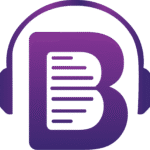With so much research out there—from academic journals to preprints and blog summaries—it can be hard to tell what’s solid science and what’s… well, not. Whether you’re a student, journalist, policymaker, or just curious, knowing how to quickly assess the quality of a research paper is a valuable skill.
Here’s a practical guide with simple checkpoints and tips to help you differentiate good research from sloppy or misleading work.
1. Check if the Numbers Add Up
One of the easiest ways to spot sloppiness:
- Do the totals in tables and charts make sense?
- Are percentages consistent and adding up logically (e.g., to 100%)?
- Are sample sizes consistent throughout the paper?
Quick trick: If the authors can’t get basic arithmetic right, that’s a red flag — it might signal carelessness that affects the rest of the study.
2. Read the Abstract — and Then the Full Method Section
The abstract gives you the overview — but the methodology reveals how rigorous the research really is:
- Is the sample size large enough?
- Was there a control group?
- Are the variables clearly defined?
- Did they mention limitations?
Red flag: Vague methods, missing details, or overpromises in the conclusion with weak evidence.
3. Look for Reproducibility
Science should be reproducible. A good study:
- Describes the methods and tools in enough detail for replication
- Shares datasets or mentions where to access them
- Cites prior work it builds upon
Pro tip: Some journals now include a “reproducibility badge” or “open data” section — look for it.
4. Check the References
- Are the sources recent and relevant?
- Do they cite peer-reviewed papers or rely heavily on outdated or non-academic sources?
- Do the citations support the claims being made?
Tip: A cluttered or unbalanced reference list (e.g. all self-citations or missing major studies in the field) can signal bias or poor scholarship.
5. Be Wary of Cherry-Picked Data
Sometimes, authors selectively report only the results that support their hypothesis.
- Look for whether all outcomes are reported
- Check for statistical significance vs. practical relevance
Tool tip: Use PubPeer to see if the paper has been discussed or flagged by other scientists.
6. Look for AI-Generated or Low-Effort Work
In the age of ChatGPT and AI summarizers, some papers might be too perfect — or suspiciously generic.
- Repetitive phrasing
- Lack of deep discussion or insight
- No evidence of real-world data collection
Tip: Google sections of the text to check for plagiarism or recycled content.
7. Author and Journal Credibility
- Authors: Do they have prior work in this field? Are they affiliated with a reputable institution?
- Journals: Is the paper published in a peer-reviewed journal or a questionable “pay-to-publish” outlet?
Tool tip: Use the Directory of Open Access Journals (DOAJ) or SCImago Journal Rank to check journal quality.
🎓 Trust but Verify
At Briefio, we’re all about making research digestible and trustworthy. But even a well-summarized paper is only as good as the original source. With a few simple habits, you can avoid being misled and make sure you’re leaning on science that holds up under scrutiny.
Stay qurios — and skeptical.





